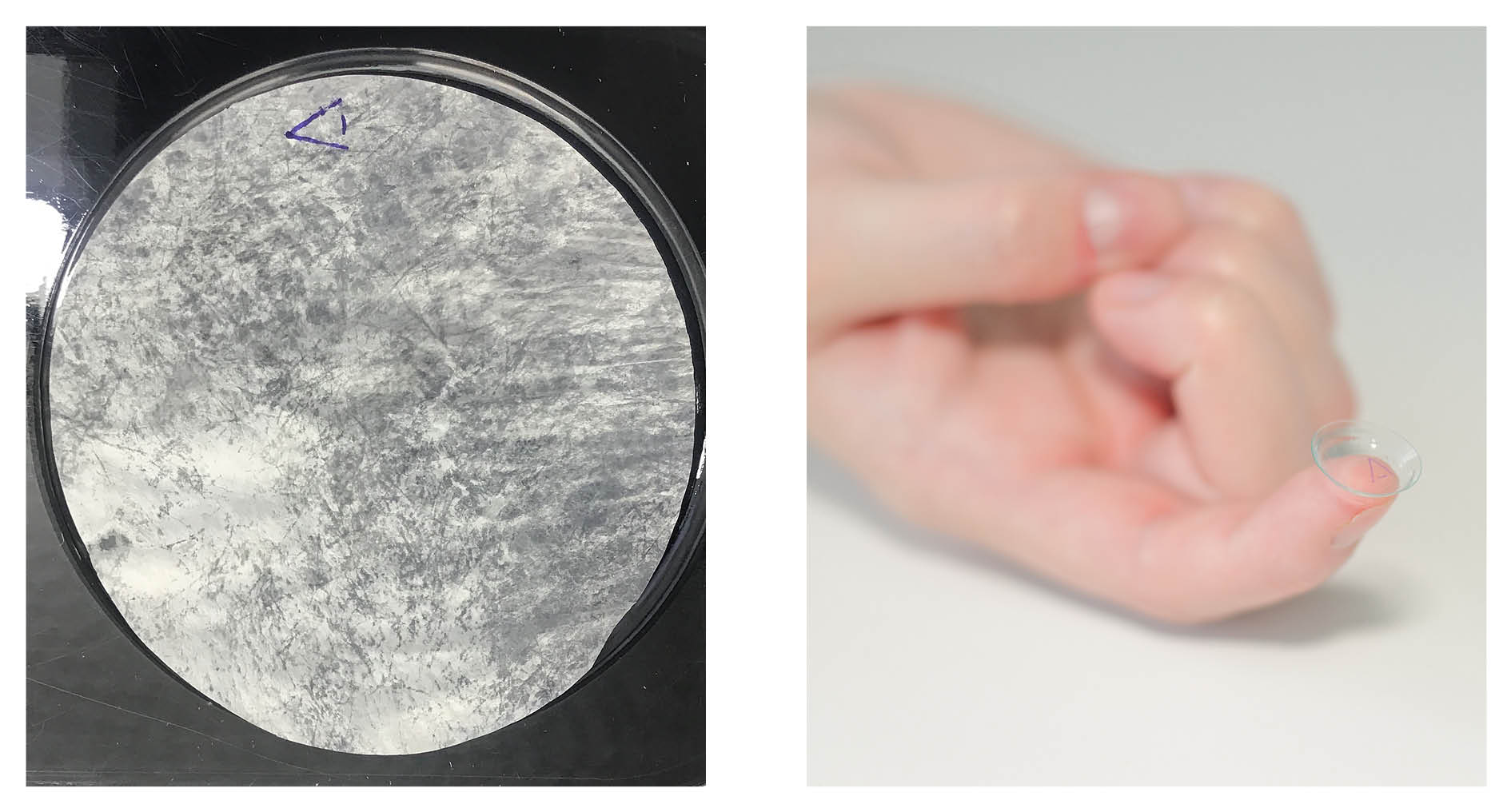Omnigen / OmniLenz
Information for patients from Ophthalmology
You have been referred to the hospital for treatment with amniotic membrane for your eye condition. This leaflet explains:
the benefits and risks to having this treatment
what will happen during the procedure, and
how you care for your eye afterwards.
If you have any further questions, please speak to your doctor / optometrist.
What is Omnigen / OmniLenz?

Omnigen is a thin, transparent (clear) sheet of preserved human tissue. The tissue is taken from the amniotic membrane. During pregnancy, amniotic membrane lines the sac that protects and nurtures the baby while they develop in the womb.
The Omnigen is placed on the surface of your eye, with a contact lens (OmniLenz) to hold it in place.
How can amniotic membrane help my condition?
Research and experience has shown that amniotic membrane can help reduce pain and wound healing. This includes healing damaged and inflamed eye surfaces.
Are there alternatives?
Yes, the alternatives to this procedure are:
a regular bandage contact lens, with no Omnigen material, or
Omnigen material inserted as a day case procedure in the surgical unit.
How long will I be in hospital?
The treatment is performed in the Eye Clinic. It is an outpatient procedure, so you will not need to stay in hospital overnight.
How long will the contact lens stay in place for?
The contact lens will be:
removed in clinic, in at least 7 to 10 days’ time, or
may stay in your eye for up to two months.
How is the amniotic membrane donated?
Mothers having an elective (planned) caesarean birth donate their amniotic membrane. They have consented for their tissue to be used to help others. They receive no payment or benefit from this.
Donors are asked questions about their medical and social history. This is to make sure the donated tissue is safe and to reduce the risk of disease transmission.
Donors also have a blood test. This checks for HIV, Hepatitis B, Hepatitis C, HTLV-I, Syphilis, and Cytomegalovirus.
If you know that you are allergic or sensitive to any antibiotic, please tell your doctor.
What happens during my procedure?
A member of staff will greet you when you arrive at the hospital. Please refer to your appointment letter for where your procedure will take place.
The member of staff will ask you some medical questions. Please use this time to ask any last minute questions. Remember you can withdraw consent for the procedure at any time.
Once you are sitting comfortably, your doctor / optometrist will place anaesthetic drops in your eye. These drops will numb your eye and make sure the procedure is as comfortable as possible.
The Omnigen will be prepared by placing the tissue inside an OmniLenz contact lens. This is a standard lens that has been specially modified to hold Omnigen in place.
The Omnigen / OmniLenz will then be placed over the surface of your eye, like a normal contact lens. You may feel some mild discomfort to begin with; this is normal. You can use eyedrops to help with this.
How will I feel afterwards?
Your eyesight may be a little blurred after your procedure, as the Omnigen material is not completely clear. Your eye should feel better than it did when you arrived at hospital.
How do I look after my eye when I return home?
You can use your eye drops as normal. But do not use any gels or ointments in your eye with the Omnigen.
Be gentle when rubbing or touching your eye, so you do not dislodge the material. This includes when you are having a bath or shower.
Can I drive home?
Yes, you should be safe to drive after your procedure. If you are unsure, please speak to your doctor / optometrist.
You can resume normal activities (such as housework or exercise) straightaway.
Will I have a follow-up appointment?
Yes. You will normally have a follow-up appointment two weeks after your procedure. This appointment will be booked before you leave hospital.
What are the risks to this procedure?
Wearing contact lenses can sometimes cause complications. This is more likely to happen when you wear them overnight or for long periods of time. However, this is unlikely to be a problem as we control how long you wear the lens for. Any risks are minimised by contacting your doctor.
Please contact the Urgent Eye Clinic on 01233 616232, if:
you have any pain
your eye looks red, or
your eyesight becomes reduced.
If you are calling out-of-hours, phone the switchboard on 01233 633331. Ask to speak to the on-call eye doctor straightaway.
Screening for transmissible diseases helps to minimise the risk of infection. However, screening is not perfect and may not find all diseases or unidentifiable pathogens. In particular, when using human tissue, it is not possible to test for the type of organism called prions. Prions can cause variant Creutzfeldt-Jakob disease (vCJD), a rare but fatal human degenerative condition. If a donor is at high risk of prion infection, this would be found during their lifestyle / medical history screening process.
Strict surveillance has been in place in the UK since May 1990. During this time there have been 178 cases of vCJD reported, and 177 of those cases analysed. No links have been found to tissue transplant, including eye treatment.
There is no reported evidence of amniotic membrane causing an allergic reaction in the eye. However, should you have any signs that you are having an allergic reaction, please contact:
the Urgent Eye Clinic on 01233 616232 or,
out-of-hours, call the switchboard on 01233 633331. Ask to speak to the on-call eye doctor straightaway.